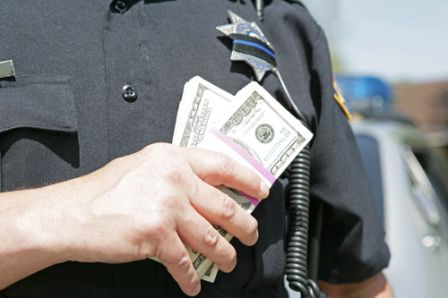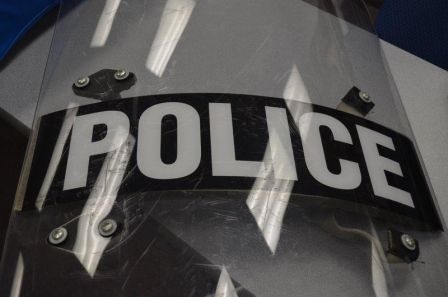9 Police Departments With Corrupt Pasts
If you want to learn more about the history of your city, explore the history of corruption within the city’s police department. Police corruption, which can include kickbacks, shakedowns, and protection of or even direct participation in illegal activities, has been around since the creation of the country’s first police force. Initially, the police were not asked to “serve and protect,” but to mediate between criminal and political kingpins as they fought each other for power. Some may say, the more things change, the more they stay the same. But perhaps understanding the history of city and police corruption can help to provide the vision and leadership for a better future. Here are nine police departments with well-documented corrupt pasts.
-
New York Police Department
Since its establishment in 1844, corruption has been a fact of police life in New York City. From the very beginning, New York’s underpaid and overworked police officers were expected to serve the needs of the city’s political leaders while collecting money from gang leaders, gamblers, and pimps for the privilege of operating relatively unmolested. Back in 1895, officer Alexander S. Williams, took advantage of his appointment as captain of the city’s 21st Precinct, which included the Tenderloin and Gas House districts, to collect money from criminals, including the madams of several brothels, and make a fortune as a result. Williams, who earned his nickname “Clubber,” once said, “There is more law in the end of a policeman’s nightstick than in a decision of the Supreme Court.” After investigation by two committees, Williams resigned, went into the insurance business, and died a multimillionaire. Who says crime doesn’t pay?
-
New Orleans Police Department
New Orleans Mayor Landrieu released a hopeful, conciliatory statement in the wake of the sentencing of five New Orleans police officers to several years in prison for their roles in shooting unarmed citizens in the chaotic days that followed Hurricane Katrina. “We now have an opportunity to turn the page and to heal,” Landrieu said. “It is my commitment to the people of New Orleans to rebuild and reform the NOPD.” The first police force in the then-French New Orleans was established in 1803, only to be disbanded due to countless complaints from civilians. Given the history of the NOPD, Landrieu definitely has his work cut out for him.
-
Chicago Police Department
By the end of the 19th century, the city of Chicago enjoyed the dubious reputation of being a haven for “dangerous classes;” a city that was more like an out-of-control frontier town “with an absence of moral virtue.” The Chicago Police department went without large-scale reform until 1960 when eight police officers from the city’s North Side or Summerdale district were charged with running a large-scale burglary ring. Known as the Summerdale Scandal, the case generated unprecedented media attention, and prompted the creation of a much-needed police superintendent role to oversee and enforce rules and regulations within the department.
-
Los Angeles Police Department
The 1951 Bloody Christmas Scandal, a real-life scandal that appears in author James Ellroy’s book L.A. Confidential and its film version, involved as many as 50, mostly drunk, police officers who took time out from a Christmas party to beat six prisoners for more than 90 minutes. Since more than 100 people either witnessed or knew of the beatings, the incident became public, and prompted the city’s Mexican community to come forward with more charges of police brutality against citizens. In 1952, a grand jury succeeded in convicting only five of the officers involved, and none of them received a sentence amounting to more than a year in prison. And then there was the Rampart scandal and the Rodney King beating.
-
Miami Police Department
Miami in the ’80s experienced an “epidemic” of police corruption due in part to the enormous amount of cocaine being smuggled into South Florida from Latin America. A cheap, deadly derivative of the drug known as “crack” would infiltrate other cities throughout the U.S., and transform many once relatively peaceful working class neighborhoods into war zones. Police corruption in Miami reached its height in 1986 when, as a result of an inquiry by the Federal Bureau of Investigation, more than a dozen officers from the police department faced charges that ranged from drug dealing to murder.
-
Sheriff’s Department, Dallas County, Alabama
Students of Civil Rights history know that Selma, Ala. was the location of a brutal assault on a group of peaceful marchers led by John Lewis of the Student Non-Violent Coordinating Committee and Reverend Hosea Williams of the Southern Christian Leadership Conference by the Selma Police Department led by Sheriff Jim Clark, as well as state troopers, and recently deputized members of the community. Law enforcement officers used nightsticks, horses, and tear gas to indiscriminately attack the peaceful demonstrators. Televised images of the attack inspired even more support for the Civil Rights movement. Sheriff Clark later lost his bid for reelection, went on to sell mobile homes for a while, and in 1978, was busted for conspiracy to import marijuana.
-
Ahome Municipal Police Force
Ahome is a municipality in the Mexican state of Sinaola. Just last November, Ahome’s entire Police Department, 32 officers and commanders, were arrested by state police for the department’s connection to two powerful drug cartels. Amazingly, the director of the state police who carried out the arrest, “Chuytoño” Aguilar Iniguez, was at one time one of Mexico’s Attorney General’s most wanted men for his connections to kingpins within the Sinaloa drug cartel. After having fled to Cuba in 2004 while undergoing investigation for corruption, Iniguez was granted a sort of immunity in 2009 by a federal court, and returned to Mexico to profit from, er, whoops, we mean “fight” crime.
-
Philadelphia Police Department
You know you’ve got a corrupt police department when it comes under the scrutiny of Human Rights Watch. HRW has stated that, “the Philadelphia police department (in terms of) corruption and brutality … has one of the worst reputations of big city police departments in the United States.” In the early 1990s, a group of PPD officers, some known throughout the city as the Four Horsemen of the Apocalypse, conducted a series of unreported raids on crack houses where officers would steal from suspects. The arrest of Mumia Abu-Jamal for the murder of a police officer, and the public outcry at his being sentenced to death (this sentence was recently overturned), brought national attention to the PPD’s reputation for brutality and corruption.
-
Baltimore Police Department
In March 2012, a Baltimore police officer was sentenced for his part in what is known as the Towing Scandal, a criminal ring that included more than 50 other members of the Baltimore Police Department. Vehicles were towed from accident scenes by a towing and repair company owned by two police officers. Other officers were paid to participate in the scam, which generated hundreds to thousands of dollars for those involved. Accident victims were even encouraged by officers not to talk to their insurance companies.
*Today’s article brought to you by www.onlineclasses.org






I dont understand police beating on these guys. The Rodney King one was bad. Right now in Fullerton CA there are two police on trial for the death of a homeless man. There is 20 minutes of tape on it. Big Brother is watching !
Only slightly less well-known is New Rome, OH, a small suburb of Columbus, which gained such a MASSIVE reputation for community-wide corruption (entire police department, mayor, you name it) that the state finally stepped in, made oodles of arrests, and dissolved the incorporation of the town. It was THAT bad. Do a Google search on corruption in New Rome; I’m sure the websites detailing some of the more outrageous corruption experiences are still live.
I tried to avoid driving through there, because driving at 36 mph in a 35 mph zone was enough to get you a ludicrously high traffic ticket.